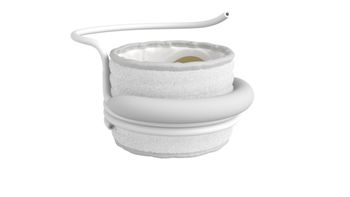
A family doctor survival strategy
Here are four ways family physicians can focus on career sustainability and additional ways of feeling impact, connections, and brainpower.
For many family doctors, the work they love to do most includes taking care of the
The everyday health care context is hostile to supporting the traditional work that many family doctors love to do most. It is a health care context that involves
By itself, this individual response has little future in primary care workplaces that are organizationally controlled. What family doctors need is to alter their vision, but in a manner that focuses on career sustainability, and shift their focus to additional ways of feeling impact, connections, and brainpower. Here are four ways to do that:
Practice and find employers that support greater self-care.
Many professionals do not practice appropriate
Redirect some of the “passion” for your work towards what your patients find valuable.
Family doctors should make efforts to redirect some of the passion they have for the things they most love to do towards those things their patients want most, recognizing these may not always be the same, but can be aligned better. For example, the patients a family doctor serves may value timely and quick care delivery over spending longer visits with them, may want a doctor’s advice but not direct oversight of their health, and may want to access primary care at places other than the family doctor’s office, such as urgent care centers, but still desire their doctor to coordinate that care for them.
Some of these things do not produce or support work that family doctors traditionally love to do most. Some of these things frustrate family doctors initially because they require them to perform their roles differently. But meeting patient expectations, and satisfying those patients in the process, can bring a different feeling of reward to family doctors. It still offers a sense of achieving impact, but in a way defined more by their patients. Family doctors still use their brain power, but perhaps for example in becoming more efficient or figuring out better ways to make themselves available to their patients. They will make plenty of human connections, accepting that those connections are often more episodic rather than longitudinal.
Emphasize the variety in work and employers over one total commitment.
Many physicians are salaried
Look for, accept, and enjoy the moments where the things you love to do most occur.
Family doctors need to take advantage of those times, even if there are fewer of them, where they can still do what they traditionally love to do most. For family doctors, this might mean enjoying the several patients each eight-hour shift where they were able to spend the desired time interacting with them on a deeper therapeutic level, or where they saw most vividly how they were making a positive impact in their care. This strategy requires compartmentalizing the good from the bad parts of a workday in one’s mind so that there is still a sense of personal fulfillment experienced, separate from the work experiences that don’t deliver on the promise.
Family doctors face challenges, and primary care workplaces will remain somewhat hostile to the ideal of traditional family medicine work. Family doctors have to evolve, both in how they strategize their careers, jobs, and work; and in how they think about and pursue the things they love to do most. Call it a survival strategy. Or just smart career planning that allows for longer-term sustainability over burnout, dissatisfaction, and regret. Family medicine may no longer be what it used to be. But the sooner family doctors find ways to take advantage of the way primary care is now and will be in the future, the better it will be for them.
Timothy Hoff, Ph.D., is professor of management, healthcare systems and health policy at Northeastern University in Boston, Massachusetts, and associate fellow at Green Templeton College at the University of Oxford in the United Kingdom. He is the author of the book “Searching for the Family Doctor: Primary Care on the Brink” (Johns Hopkins University Press, 2022).
Newsletter
Stay informed and empowered with Medical Economics enewsletter, delivering expert insights, financial strategies, practice management tips and technology trends — tailored for today’s physicians.








